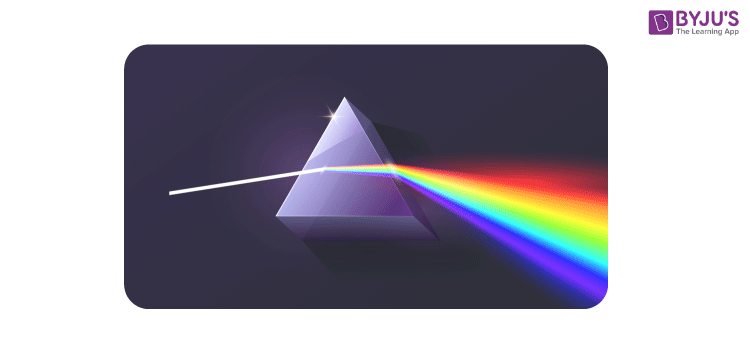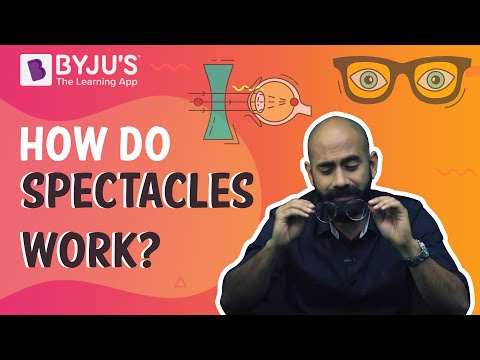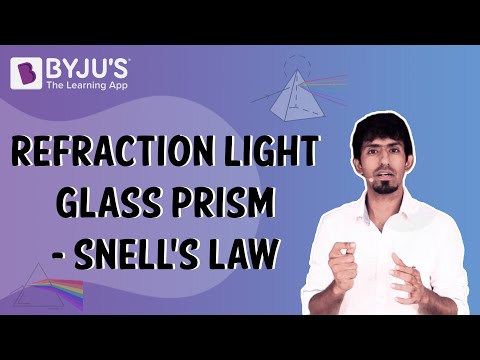According to the CBSE Syllabus 2023-24, this chapter has been renumbered as Chapter 10.
CBSE Class 10 Science Chapter 11 The Human Eye and the Colourful World Notes
Using the knowledge of light and some of its properties which students study in the previous chapters, students study how these concepts apply to the human eye in the class 10 Science chapter, The Human Eye and the Colourful World. Students also study some of the optical phenomena. The nature and the formation of the rainbow, the splitting of white light and the blue colour of the sky are also examined in the chapter.
Structure of a Human Eye
Of all the sense organs, the human eye is the most significant one as it enables us to see the beautiful, colourful world around us. The eye is spherical in shape and has a diameter of 2.3 cm on average. The internal structure of the eye includes- the cornea, iris, pupil, lens, ciliary muscles, retina, nerve cells, optic nerve, yellow spot, aqueous and vitreous humor, and suspensory ligament.

The lens system of the human eye forms an image on the light-sensitive screen called the retina. The cornea is the thin membrane of the eye through which light enters. Most of the light refraction occurs at the outer surface of the cornea. A dark muscular diaphragm that controls the size of the pupil, known as the Iris is present behind the cornea. The pupil is a structure in the eye that controls and regulates the amount of light entering the eye. The light-sensitive cells get triggered upon illumination and induce electrical signals. These signals are sent to the brain through the optic nerves. The brain analyses these signals and, finally, processes the information so that we sense objects as they are.
For more information on the Human Eye and Its Structure, watch the below videos


To know more about the Structure of a Human Eye, visit here.
Defects of a Human Eye
There are few common eye disorders seen in all individuals, and they are caused by several factors. These conditions can be improved by the corrections. The defects include:
Myopia – This is also called short-sightedness. A person with this eye defect can only see nearby objects clearly compared to distant objects. This condition can be corrected using a concave lens.

To know more about Myopia, visit here.
Hypermetropia – This is also called farsightedness. A person with this eye defect can only see distant objects clearly compared to near objects. This condition can be corrected using a convex lens.

To know more about Hypermetropia, visit here.
Presbyopia – This is an age-related condition caused due to the weakening of ciliary muscles, hardening of the lens, and reduced lens flexibility. A person with this defect usually finds difficulties focusing on nearby objects and is unable to read or write.
Cataract – This is an age-related condition caused due to the loss of transparency of the lens by erosion of lens proteins. It usually results in blurry vision and cloudy lenses and can be corrected by replacing the old lens with an artificial lens.
Dispersion of White Light by a Glass Prism
A prism splits the incident white light into a band of seven colours. The band of the coloured components of a light beam is called its spectrum. Isaac Newton was the first to use a glass prism to obtain the sunlight spectrum. Different colours of light bend through different angles with respect to the incident ray as they pass through a prism. The red light bends the least while the violet the most. Thus the rays of each colour emerge along different paths and thus become distinct.

Atmospheric Refraction
The refraction of light by the Earth’s atmosphere is known as atmospheric refraction. Atmospheric refraction is caused by the bending of light rays when they pass through the layers of the earth’s atmosphere, which are of different optical densities.
Twinkling of Stars
The twinkling effect of stars is due to the atmospheric refraction of starlight. The starlight undergoes continuous refraction as it passes through the atmosphere before it reaches Earth. As the path of rays of light coming from the star goes on varying slightly, the apparent position of the star fluctuates, and the amount of starlight entering the eye flickers.
Scattering of Light
When a light beam goes through a medium, it hits the particles existing in them. Due to this phenomenon, some of the light rays get absorbed while a few get scattered in various directions. The intensity of the scattered light rays depends on the particles’ size and wavelength.
Know More: Scattering of Light
Students can refer to the short notes and MCQ questions of this chapter for quick revision from the links below. They can also access the solution pdf for MCQs.
- The Human Eye and the Colourful World Short Notes
- The Human Eye and the Colourful World MCQ Practice Questions
- The Human Eye and the Colourful World MCQ Practice Solutions
For more information on Defects Of Vision And Their Correction, watch the below video

Few Important Questions
- What is the Tyndall effect?
- What are Myopia and Hypermetropia?
- Explain in detail Newton’s prism experiment.
- Explain why stars twinkle and why the planets do not twinkle.
- Explain the structure and function of the human eye with a neat labelled diagram.
- Do our eyes have blind spots?
For more information on Refraction of Light and Scattering of White Light by a Glass Prism, watch the below videos


Access Notes of CBSE Class 10 Science all Chapters here.
Learn more about the human eye from the topics given below:
| The Human Eye | Eye Defects: Myopia |
| Structure And Functioning of a Human Eye | Eye Defects – Hypermetropia Or Hyperopia |
Frequently Asked Questions on The Human Eye and the Colourful World
If Ram is facing west and he sees a rainbow in front of him, in which direction most probably the Sun is?
The Sun and the rainbow will always be in opposite directions. A Rainbow is formed when a raindrop causes the light from the Sun to undergo partial internal reflection. This means that the light is reflected back in the direction it came from (from the Sun). Hence, we can see a rainbow only if our back is facing the Sun. Hence, in this case, the Sun will be in the east direction.
Which colour will be refracted the most when white light is dispersed from a
prism?
The refractive index of the medium is maximum for violet light and minimum for red light. Therefore, when white light enters a prism, it disperses into seven constituent colours, and violet light shows the maximum deviation.
Why can one not see through the fog?
Fog is a visible aerosol consisting of tiny water droplets or ice crystals that remain near the surface of the earth. When light travels through the fog, it interacts with the water droplets of the fog and is scattered by them. The scattering of light by fog droplets is not uniform in all directions. The light from various objects gets scattered by water droplets, so the eye cannot distinguish the objects, and thus one cannot see through the fog.
Comments